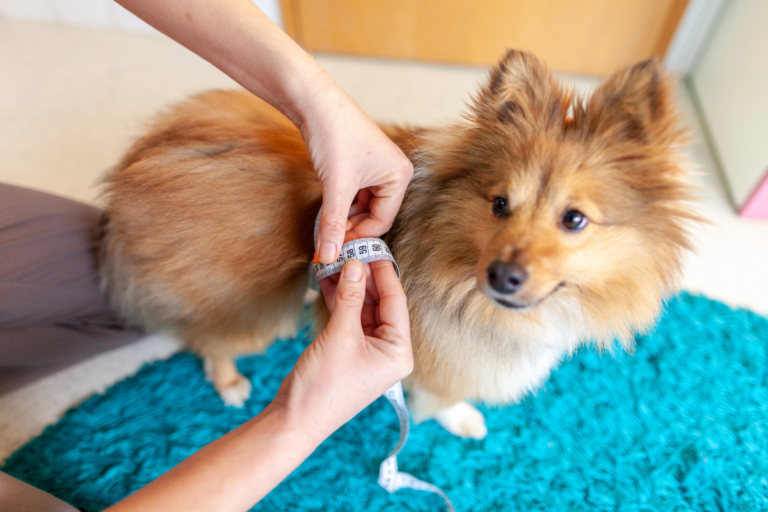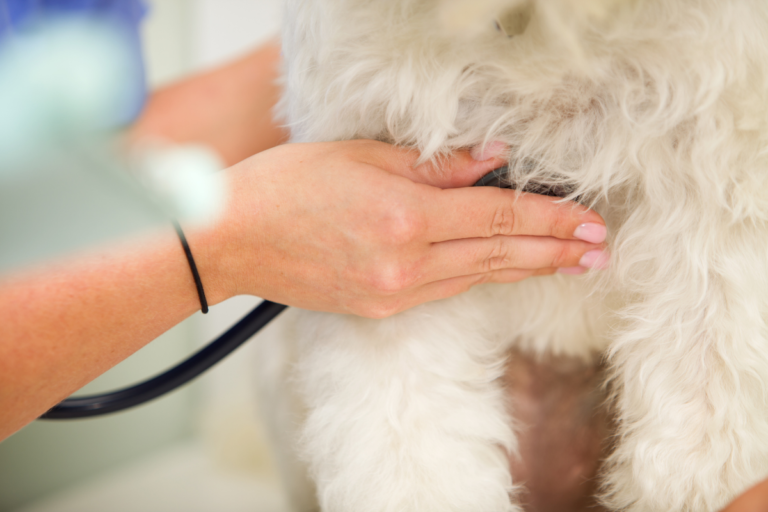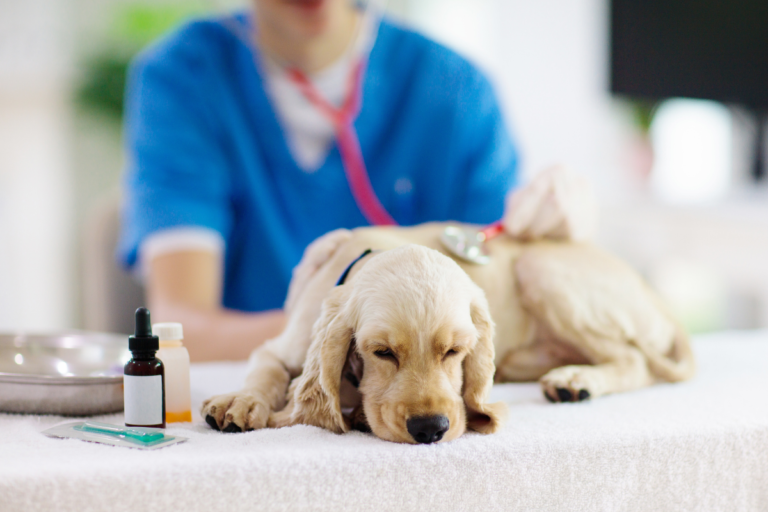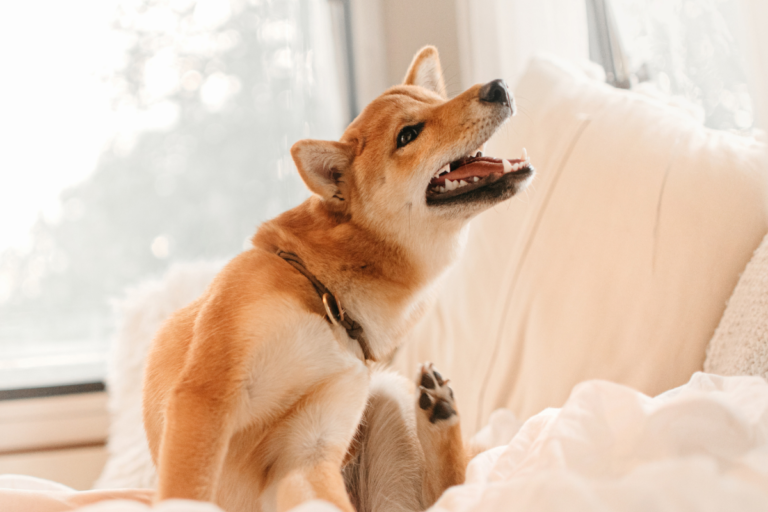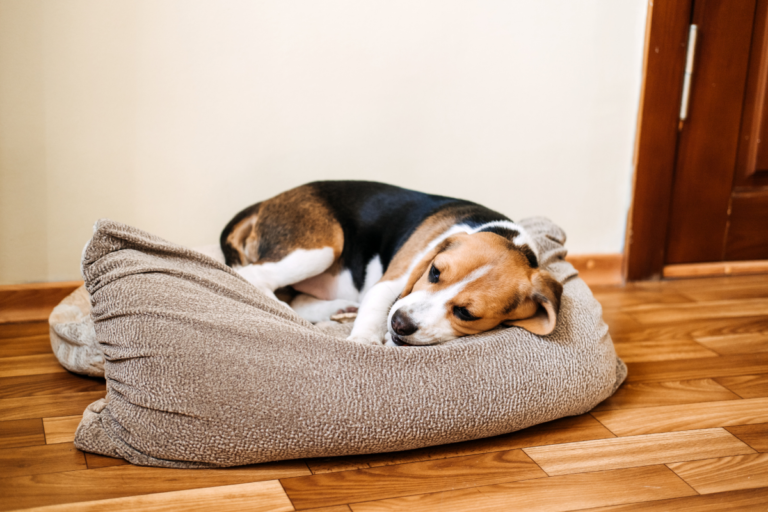Understanding Pug Health Problems: Our Guide to Keeping Your Pup Healthy
Keeping Our Pugs in Tip-Top Shape
We all want our pugs to be the best versions of themselves, right? Our little snorty friends deserve only the best when it comes to their health care. Catching issues before they snowball into bigger problems starts with regular vet visits and preventive wellness checks.
Regular Vet Visits
Taking your pug to the vet shouldn’t be a once-in-a-blue-moon event. It’s not just for the “Oh no, something’s wrong” moments but for staying on top of our pug’s health. You wouldn’t skip your car’s oil change, and you shouldn’t skip your doggie’s check-up. Adult dogs benefit from yearly or twice-a-year blood tests, like a regular health maintenance routine (PetMD). These tests check blood cells, kidneys, liver, and other organs. It’s like the full-service treatment at that five-star spa.
And for our older, wiser pugs (we mean senior citizens of the pug world), getting regular exams is even more crucial. It’s like adding seasonings to a dish, making sure everything is just right. You might notice their weight isn’t what it used to be—those extra rolls or fewer might be more than just overindulgence in doggie treats.
Some key diagnostic nuggets include:
- Checking thyroid hormone levels
- Sampling any suspicious skin lumps
- X-rays to peek at that heart rate
Don’t forget the blood pressure reading for older dogs. Just like us, they need to keep that in check (PetMD). High blood pressure is not just a people problem—it can mess with a pug’s heart, kidney, and vision too.
Health Checkups Before Problems Arise
Preventing health hiccups is super important. Catching issues early is like fixing that squeaky door before it falls off the hinges. Here’s a guide to those all-important health checks:
- Weight Watching: Monthly weigh-ins aren’t just for your New Year’s resolution. They help spot issues like obesity or hidden health concerns. Wave goodbye to those unwanted pounds!
- Tooth TLC: Keep those pearly whites shining. Ignoring dental health can lead to gum problems. If you’re curious, check out our deep dive into dog gum disease.
- Eye Check: Those adorable bulgy eyes can spell trouble. Regular exams catch problems before they become serious. Poke around here for more info.
- Joint Reviews: We all know pugs can have hip issues. A regular check-up ensures they keep those moves smooth. [Here’s](german shepherd hip dysplasia) a link if you’re keen on learning more.
- Breath Monitoring: Pug breathing can be… unique. Keep an ear out for Brachycephalic Obstructive Airway Syndrome (BOAS). Frequent heavy breathing or blue gums mean it’s time for a vet visit (Purina UK).
Here’s a snappy guide for these checkups:
| Check Type | How Often? | Why? |
|---|---|---|
| Weight Watching | Monthly | Spot weight issues early |
| Tooth TLC | Every Year | Prevent dental woes |
| Eye Check | Yearly | Stop eye issues fast |
| Joint Reviews | Twice a Year | Stay ahead of joint issues |
| Breath Monitoring | Twice a Year | Keep an ear out for breathing problems |
Staying ahead with regular vet check-ups and taking a preventive approach keeps our pugs bouncing with joy. For more tips on how to spoil your pug and keep them healthy, check out here.
Common Health Issues in Pugs
Pugs, with those smushy faces and cuddly bodies, can run into a few health bumps along the way. By getting to know their quirks and problems, we can keep our squishy pals happier and healthier.
Brachycephalic Obstructive Airway Syndrome (BOAS)
Breathing problems are almost par for the course with Pugs. Because of their adorably squashed noses, they might sound like a snoozing grizzly while they sleep. With BOAS, you’ll notice things like:
- Struggling to breathe
- Breathing noises that rival a rock concert
- Gums turning a scary shade of blue
- Quick to tire out, especially when playing
Hot days, stress, or any kind of workout can leave our pug buddies gasping for air (Purina UK, PetMD). In serious cases, a vet might suggest a little nose or throat surgery to help them catch better z’s (UFAW).
| Condition | Prevalence in Pugs |
|---|---|
| Stenotic Nares | 46 – 77% |
| Overlarge Soft Palate | 96 – 100% |
Pugs with breathing woes can struggle with exercise, get overheated easily, and have their bedtime disrupted (PetMD).
For more scoop on doggy breathing issues and ways to help, check out our articles on dog diseases and dog heart disease.
Eye Ulcers and Infections
With those eyes that seem to take up half their face, Pugs can end up with a scratch or infection here and there. Culprits include:
- A little rough-and-tumble play
- Dry peepers
- Pesky germs
If your Pug’s peepers turn red, waterworks start, or they keep squinting, it’s time to call the vet pronto.
Got some eye questions? Scope out our articles on dog gum disease and dogs teeth for more paws-on advice.
By keeping up with these common Pug problems, we can make their lives just as fabulous as them. Always keep an eye out and chat with your vet for the best care nuggets.
Addressing Joint Problems
You know, those tiny bundles of joy we call pugs sometimes come with not-so-tiny issues, particularly when it comes to their joints. Figuring out what’s up early on can make a world of difference for our wrinkle-faced pals. So, let’s break down two biggies that often pop up in the pug scene: patella luxation and hip dysplasia.
Patella Luxation
Picture this: your pug’s kneecap—like the knob of a well-loved cabinet—decides it’s tired of staying put. That’s patella luxation—a fancy way to say the kneecap wanders off. And while it sounds like a harmless hiccup, it can range from a mild quirk to a major issue, causing pain and a limpy little trot.
| Grade | What’s Happening | What It Looks Like |
|---|---|---|
| I | Kneecap’s playing peek-a-boo, you can pop it back | Sometimes limping |
| II | It’s a more frequent escapade, manual fix needed | Persistent limping, funny walk |
| III | Knob’s out of the socket, but you can fix it manually | Pug’s not comfortable, trotting gets tricky |
| IV | Kneecap’s left for good, no fixing it this time | Bad limping, lots of ouch |
Info grabbed from PetMD for our dog-loving crew.
Hip Dysplasia
Now onto hip dysplasia, where that ball-and-socket thing’s all out of whack. Instead of a snug fit, you’ve got a loose joint that screams future arthritis. Symptoms come in the form of limping, your pug doing an impersonation of a hopping bunny, or plain stiffness. You’ll typically spot this in puglets between 6 to 12 months old. Thanks, Purina UK, for the lowdown.
Keep an eye on the following signs while you cuddle with your furball:
- Rising’s a struggle
- They’re more about the snooze than the zoomies
- The do the whole “bunny hopping” skip
- Hind leg isn’t doing its job right
When hip dysplasia hits the high notes, surgery sometimes tags in to help out. Peck through this german shepherd hip dysplasia piece if you’re curious about other dogs too.
By tuning into these joint issues, we can spoil our pugs with longer, comfier lives. Don’t just stop here—discover more about various dog ailments in our dog diseases article, and peek into specific health mischiefs like french bulldog health problems.
Managing Critical Conditions
Here, we’re chatting about keeping our pug buddies safe from some really nasty stuff. These issues are serious, so knowing what to look for and acting fast is super important.
Encephalitis
Encephalitis messes with the brain, and pugs seem to have a tough time with it. Imagine seizures, not seeing right, or feeling like their world is upside down. While we don’t fully get what kicks off this condition, rushing to the vet when your furry buddy shows seizure signs can make a big difference.
Watch out for these:
- Seizures
- Blindness
- Coma
If your pug starts acting strange with any of these, sprint over to get them checked out by a vet. Want more info on doggy seizures? We’ve got a neat section you can check out here.
Legg-Calve-Perthe Disease
Then there’s this mouthful: Legg-Calve-Perthe Disease. Up to no good in the hip area, it cuts blood to the top of the femur, leading to pain and possible arthritis. Look out for hobbling, less action from their legs, and pain in the hip zone.
Surgery often swoops in to save the day, taking out the bone piece causing trouble and getting your pug back to their playtime glory. Here’s how the symptoms and their effects stack up:
| Symptom | What It Means |
|---|---|
| Lameness | Trouble walking, limping about |
| Reduced leg use | Less eager for play and walks |
| Hip joint ache | Doesn’t want to move much, looks uncomfy |
Curious about hip troubles in dogs? We’ve got more details for ya right here.
Spotting these issues early can be a game-changer for your pug’s quality of life. For more tips on finding and fighting serious dog ailments, don’t miss out on this handy guide: understanding dog diseases and symptoms.
Key Considerations for Pug Healthcare
Keeping Pugs Trim
You know how much pugs love their food—they’re little chowhounds, which can sometimes make them balloon in size. Packing on the pounds might seem cute with their pudgy rolls, but it’s not all fun and games. They might end up with creaky joints, a ticker that’s ticking off, or even a sweet tooth that’s gone sour (think diabetes). Our furry pals deserve better. So, let’s get them on the straight and narrow by watching what they eat.
| Health Problem | What Might Cause It | Game Plan |
|---|---|---|
| Creaky Joints | Too much weight | Watch portions, keep ’em moving |
| Heart Woes | Junk in the food trunk | Low-fat, all-around good grub |
| Sugar Troubles | Too many carbs | Cut down on sugars |
Here’s how to keep your pug spry:
- Treat them to top-notch chow.
- Go easy on treats and table leftovers.
- Make sure they stretch those legs so they’re not all sofa and no roamer.
- Keep tabs on their weight and give them just enough fuel to keep them going.
Want the whole scoop on tackling doggie weight? Pop over to our overweight dog advice.
Easy on Their Tummy
Pugs and their bellies can be, well, a bit drama-queen-y. They can have way more bellyaches than your average pooch. Some do better without grains, others can handle it just fine. Knowing what ticks them off and what goes down easy can be a lifesaver, literally.
Here are some belly-friendly diets to try:
- No-Grain: Perfect if they can’t stomach grains.
- Grain in Balance: A little bit of this and that, if their tummy is cool with grains.
- DIY Meals: Whip them up yourself, just make sure it’s the whole nine yards nutrient-wise.
| Type of Meal Plan | Perks | Things to Mull Over |
|---|---|---|
| Grain-Free | Knock out grain allergies | Costlier |
| Balanced Grain | More vitamins and friends | Keep an eye for tummy troubles |
| Home-Cooked | Custom menu | Takes time and some serious know-how |
Still hungry for knowledge? Dive into our section for more on dog diets and signs.
Looking after these little guys means stopping weight issues before they start and really tuning into what their bellies are telling us. You wanna keep your pug well and chipper? Bingo! Check out more on pooch health in places like french bulldog health problems and doggy illnesses.

